The soft footfalls of thousands of moccasins along unpaved rural roads across Bangladesh could be considered the soundtrack to this country's astonishing success in its battle against malaria.
On one Friday morning in December, a pair of those moccasins belongs to 42-year-old Bulbul Aktar. Here in Chakaria, in the southeast of the country, she's visiting every home in this small community by foot. It's a crucial task given the historic difficulty of gaining ground in the fight against malaria — a fight that could soon be flaring up once more.
Wrapped in a crimson shawl, Aktar approaches one of the households and shouts the standard greeting: "As-salamu alaykum!"
Asha Gudin lives here with his family. A month earlier, after working a construction job a few miles away along the border with Myanmar, Gudin spiked a fever and felt awful.
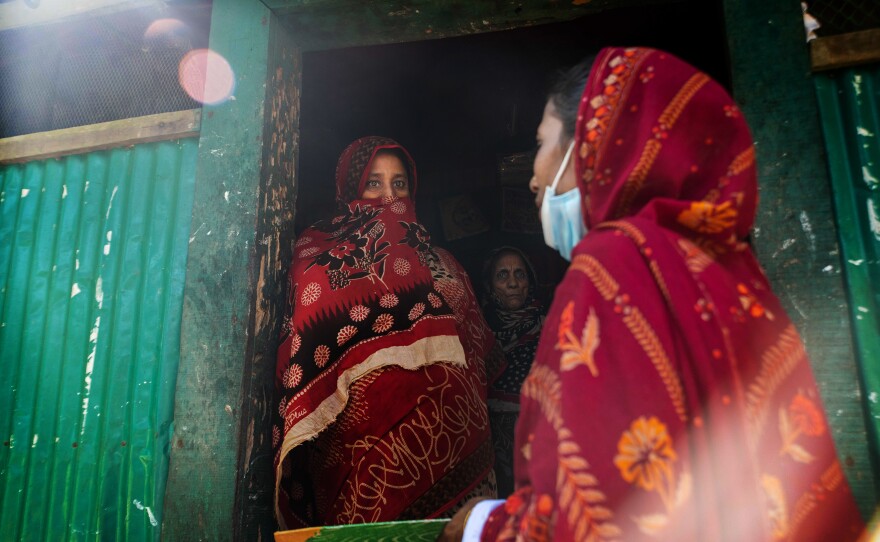
So he sought out Aktar. She's what's called a shasthya kormi — a community health worker. Bangladesh employs thousands of these workers, all of them women, to go door to door to treat people for malaria, a disease transmitted by mosquitoes.
"This is my job, my duty," says Aktar. "Every single home, I have to know about them and visit them."
When Aktar tested Gudin for malaria, he was positive. So she gave him a drug called artemisinin.
"That night, I called him," she says, to see "how he's feeling and [if] he took his drug properly or not. After that, I called him every day at 10."
Over the three-day regimen, Gudin made a full recovery.
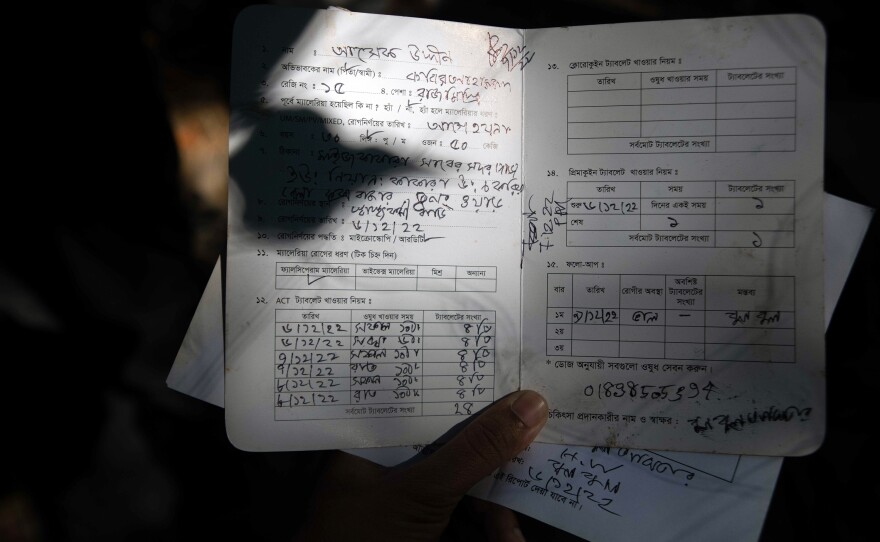
"It's really pretty remarkable," says Kasturi Haldar, a microbiologist at the University of Notre Dame who studies the malarial parasite. "I mean, [the shasthya kormi] find the malaria. That's what it comes down to. And then they treat it, one person at a time, one family at a time. And then if it comes back, they come back. They're the foot soldiers of this fight."
Gudin isn't alone in his healing. Health workers say artemisinin almost never fails. "This drug is a marvelous drug. It's a perfect drug," says Dr. Ching Swe Phru who's devoted his life to treating patients with malaria in Bangladesh. (There is a malaria vaccine that's been deployed in parts of Africa, but Haldar says it won't yield rapid elimination.)
Within 12 hours, after a typical patient with high fever and excruciating pain has taken just the first four pills of artemisinin, Haldar says, "their fever was gone. I mean, that is an amazing outcome for a drug."
Artemisinin has produced astounding results across Bangladesh. And by treating infected people quickly enough to clear the parasites from their bodies, there are fewer individuals with malaria available for the mosquitoes to bite. That reduces transmission. Between 2008 and 2020, malaria cases in Bangladesh plummeted by 93%, thanks largely to this drug.
It allowed government officials in Bangladesh and elsewhere in the region to dare to imagine something audacious — malaria elimination.
"Our Prime Minister is committed. Our Health Minister is committed," says Mushfiqur Rahman, who's with Bangladesh's National Malaria Elimination Program. "We are expecting we could eliminate malaria by 2030."
But the disease won't give up easily.
A strain of the parasite turned up in neighboring Myanmar that was resistant to artemisinin. Health officials worry it's only a matter of time before a resistant strain shows up in Bangladesh.
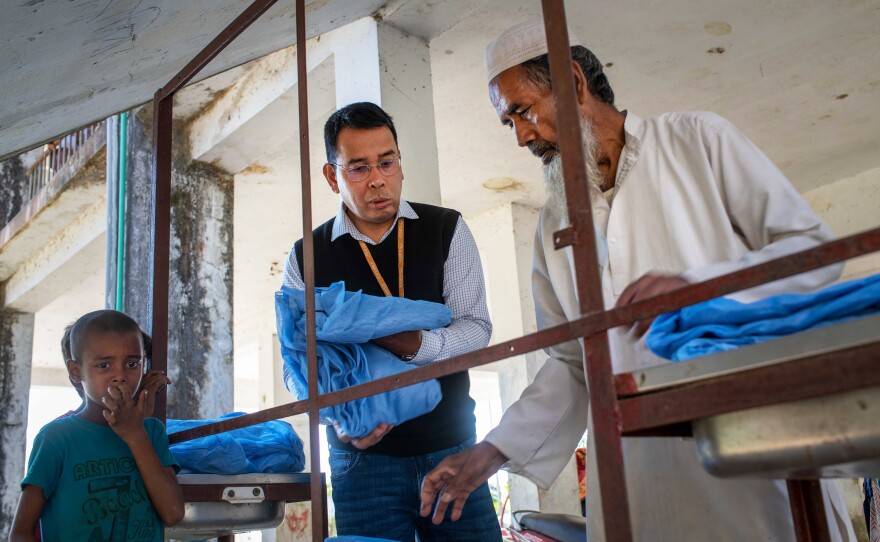
"You have to be alert," says Dr. Phru. "You have to be afraid of it. The parasites always have an inborn tendency to fight off the killing drug."
It wouldn't be the first time.
"I'm afraid that malaria has a certain history of coming back," says Phru.
Malaria is ancient but has an expanding footprint
The malarial parasite has plagued humanity for thousands of years. That history is written into our blood, which has evolved strategies to defend itself — think sickle cell disease and other kinds of anemia, which themselves can cause illness but also convey protection from malaria. "Our blood has been profoundly shaped by malaria infection," says Haldar.
Despite centuries of battling the disease, people continue to get sick from malaria, with more than 600,000 deaths every year, mostly in Africa. And its footprint is expanding as our climate changes, allowing the mosquitoes that transmit the disease to thrive in previously inhospitable regions, such as the higher altitudes of Ethiopia, Colombia and parts of Asia.
The fact that malaria is entering new terrain means the human suffering caused by the disease is also growing. Dr. Phru knows well what that's like.
In his final year of medical school some three decades ago, just before a big exam, he got hit with a terrible bout of the disease. It was his fourth tangle with malaria in a year, but this one was especially bad. "It was a very difficult time," he recalls.
While Phru tried to study, inside his red blood cells, the parasite was reproducing, eventually causing those cells to rupture. The result was agony.
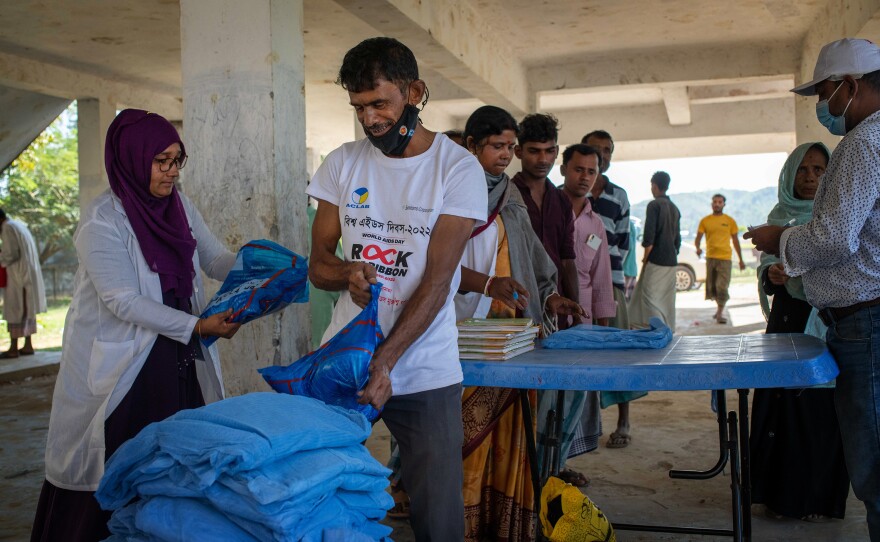
"High fevers, chills and severe headaches, vomiting and nausea," he says. "The nausea was the worst. I couldn't study. My partner would recite me all the studies, and I would listen to him. And then I went for the exam with 101 or so Fahrenheit of fever. So I had to face it."
Phru was treated with a couple of drugs, including one called chloroquine. "It's a very nauseating drug and a terrible drug," says Phru. Despite the rough side effects, he was cured.
For decades, chloroquine was one of the most valuable malarial treatments worldwide. But then, gradually, the parasite stopped responding. It had developed resistance to chloroquine.
That resistance originated in southeast Asia and spread through Bangladesh to Africa until it was pervasive.
"We consider our region an important route for transmitting drug resistance," says Shafiul Alam, a parasitologist from the International Centre for Diarrhoeal Disease Research, Bangladesh (known as icddr,b).
The resulting fatalities surged into the millions, hitting sub-Saharan Africa especially hard in the 1980s. "If you don't treat people quickly," says Alam, "they may die."
That's when doctors turned to artemisinin, a compound purified from the sweet wormwood plant in the 1970s. It had taken decades to puzzle out how to make it, deliver it effectively and produce it affordably. Once the drug became available, health workers in Bangladesh were so hopeful they created a whole infrastructure around it to support the thousands of community health workers.
Now the looming resistance to artemisinin threatens all the hard-won progress of these community health workers.
The hunt for resistant strains involves a long bus ride
Bangladesh's border with Myanmar, where artemisinin-resistant malaria has been spotted, has researchers concerned.
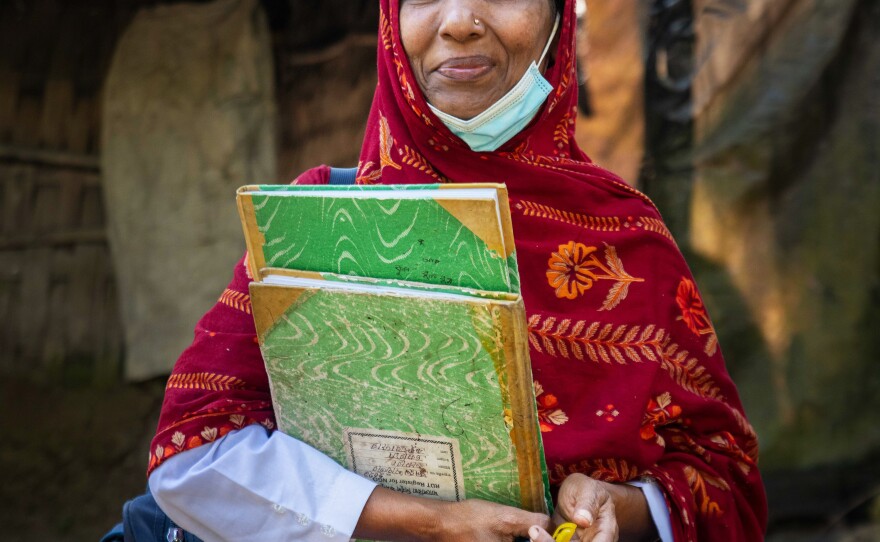
That's because much of the malaria that still circulates in Bangladesh is found in the remote hill tracts in the southeast that neighbor Myanmar. "They are now the main source of malaria," says Dr. Phru.
"About 90% [of] cases happen there and spread from there," he continues. "The health facilities are functional but sometimes they are not functional 24-7. People are underserved there. And in the far, remote areas, it is very difficult to reach."
And so malaria retains its grip.
So when people travel to the border and then return to more populated areas of Bangladesh, mosquitoes within the country can easily shuttle the remodeled parasite to new individuals. This gives resistance a foothold and opportunity to spread.
That means, says Phru, "people will die. There will be more serious patients having life-threatening conditions or about to die. And it becomes very difficult for a doctor to manage because he [has] to choose which one to attend first."
To avoid that situation, Phru says he and his team have started a program at the clinic where they draw blood from patients who have malaria but aren't responding well to artemisinin treatment. They put those samples in a cooler on an overnight bus headed for the capital.
The samples are then brought to Shafiul Alam's lab at the icddr,b, which is where University of Notre Dame microbiologist Kasturi Haldar has set up shop. She points to the glass slide on the microscope. It's in this sample where she says they found the single resistant strain of malaria within Bangladesh so far. It came from the Bandarban Sadar subdistrict in the southeast in 2018.
"If you only find one strain that's resistant," says Haldar, "it doesn't matter as long as it doesn't spread." But what she's looking for is whether that resistance is spreading.
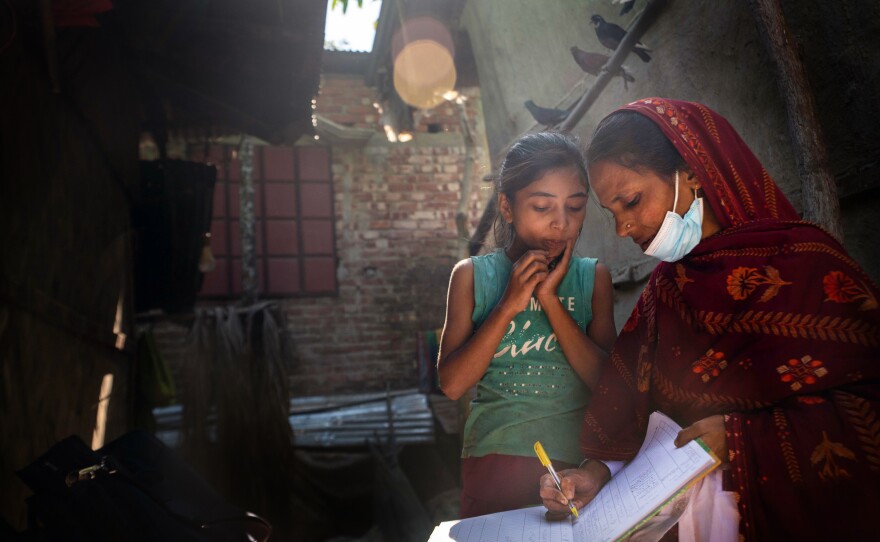
The current set of samples may not tell the whole story, however. Not everyone with malaria ends up at the clinic, so it's possible there are resistant parasites circulating unnoticed in the population.
To that end, Haldar is considering enlisting the shasthya kormi health workers to collect more samples from people within the community to expand the hunt for resistant malaria. That will help her and her team get a better lock on how prevalent the disease is, identify the mutations that may be causing the resistance and then look for different drugs the parasite hasn't yet outsmarted.
Haldar is playing the long game against those parasites, one that won't be won easily. "They're complex," she says, "and they deserve your respect."
Copyright 2023 NPR. To see more, visit https://www.npr.org. 9(MDAzMjM2NDYzMDEyMzc1Njk5NjAxNzY3OQ001))







